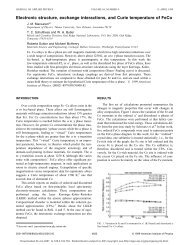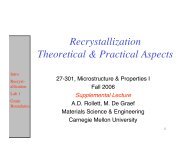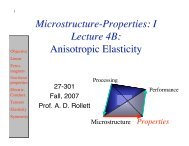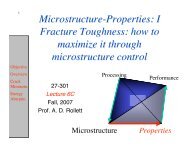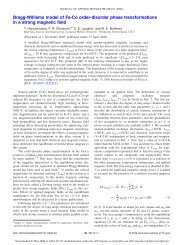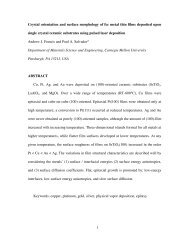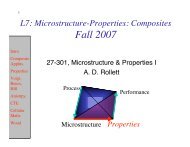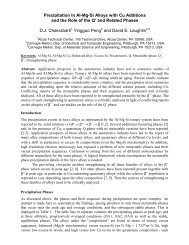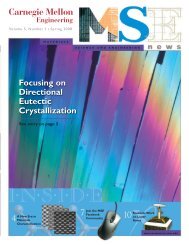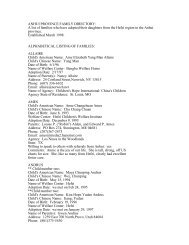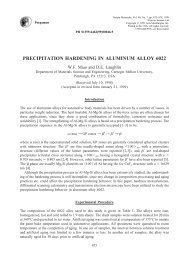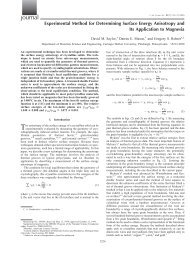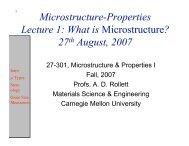popLA Manual (PDF) - Materials Science and Engineering
popLA Manual (PDF) - Materials Science and Engineering
popLA Manual (PDF) - Materials Science and Engineering
You also want an ePaper? Increase the reach of your titles
YUMPU automatically turns print PDFs into web optimized ePapers that Google loves.
In all the polar figures, there is some concentration near the origin of many sections. (This is a cube component<br />
due to partial recrystallization.) In the square plot, the concentrations at the top line (at various places in the<br />
various sections) all correspond to this one component. The best way to avoid any degeneracies for this<br />
orientation is to use oblique sections.<br />
• Run p.5#4, take option 2, angles from 0 to 45°. The output is .CON. For the benefit of some improvement in<br />
the plots themselves, let us also smooth this file: go to p.2#8, range 5.0, do not treat as “INCOMPLETE pole<br />
figures”. The resulting file is called .MPF (<strong>and</strong> overwrote the smoothed .RPF you may have made early on.<br />
The best is to rename it to .CMN, which you can do by escaping to DOS (p.1#8), then type exit to come back<br />
to <strong>popLA</strong>.<br />
• Now plot (.MPF or .CMN): 10 sections. (The projection from this is the {001} pole figure again, but it is not<br />
plotted because, under some circumstances, the projections contains more, symmetrically equivalent<br />
components than are shown in the sections.) Scale 1600/3.<br />
• Try a few visual changes: F2, rewrite the first line to something descriptive, put a net on all plots, delete the<br />
Euler-angle information, stay with high resolution, but eliminate the contours (default!), finally change to<br />
vertical stacking (which allows you easier pasting for a “column figure”).<br />
TUTORIAL 18



